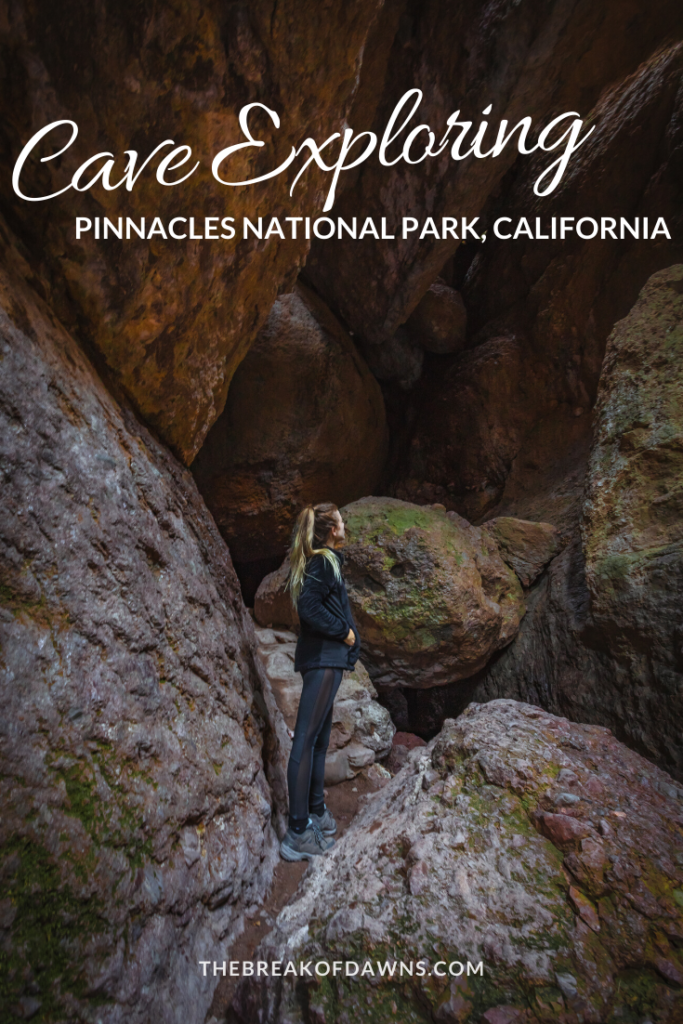
It wasn’t too long ago when I discovered the newest National Park in the United States. After that excursion, I wrote a blog post about the best loop hike to take in the park to see all it has to offer (click here if you missed out on it!) Along with stunning hikes in Pinnacles are the caves, proving to be one of the coolest self-exploration opportunities around. Today I’m bringing all the pertinent info you need about hiking the caves in Pinnacles National Park, including which routes to take, info about each and the gear you’ll need to explore!
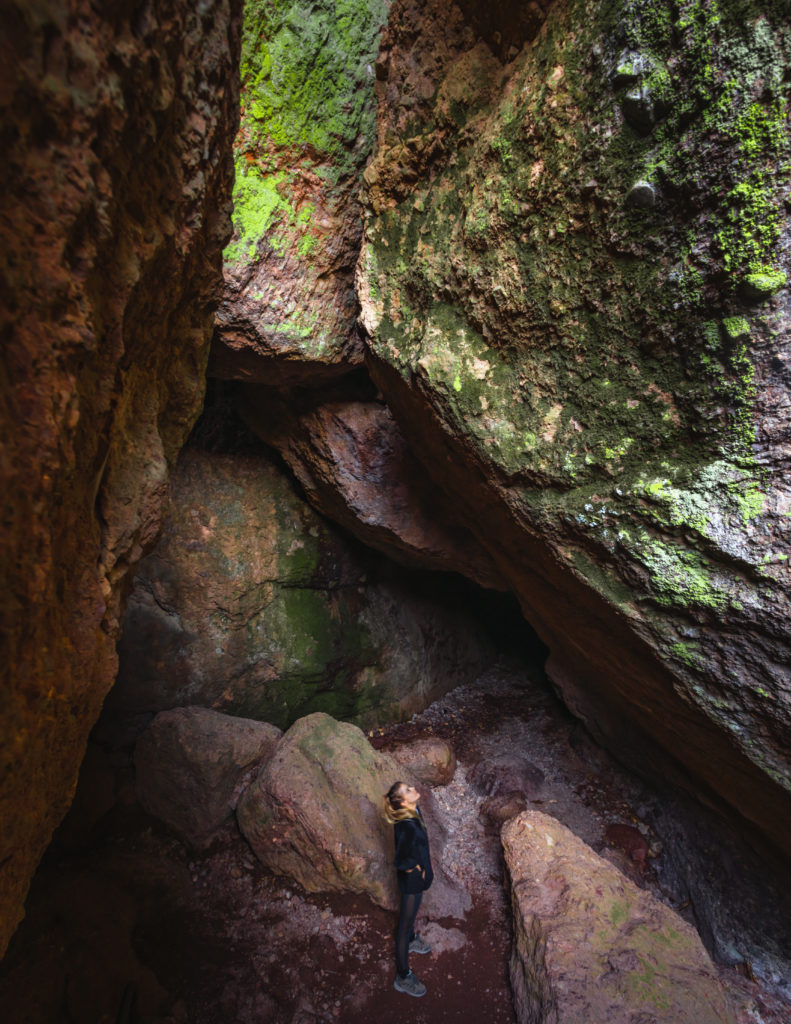
About the Caves in Pinnacles National Park
The caves in Pinnacles National Park differ from most throughout the world. Rather than walking into underground tunnels, you actually explore through steep canyons filled with massive boulders. These types of caverns are referred to as talus caves.
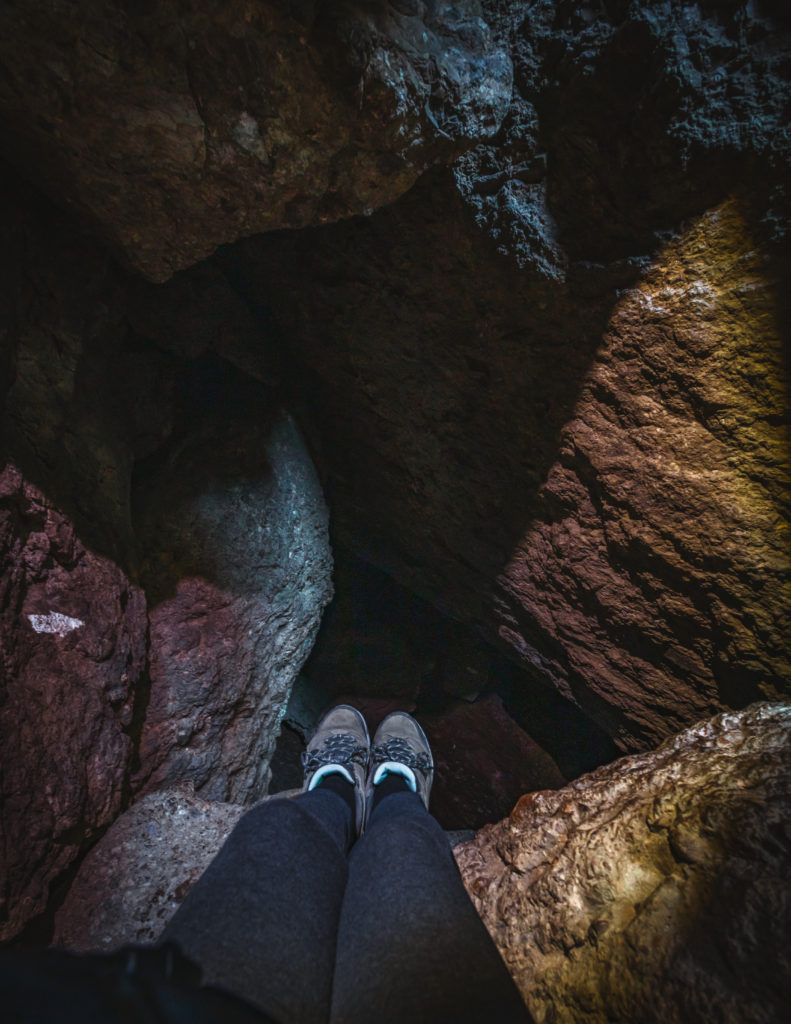
So how did the talus caves in Pinnacles National Park come about? Narrow canyons formed by fault-line fractures surround Pinnacles in a maze-like fashion. With the erosion of the cliffs above, massive boulders fell below, filling the canyons with a jumbled mess. Thanks to this erosion of the peaks, the talus caves were formed at the end of the last Ice Age.
Want to learn some more cool facts about Pinnacles National Park? Click here!
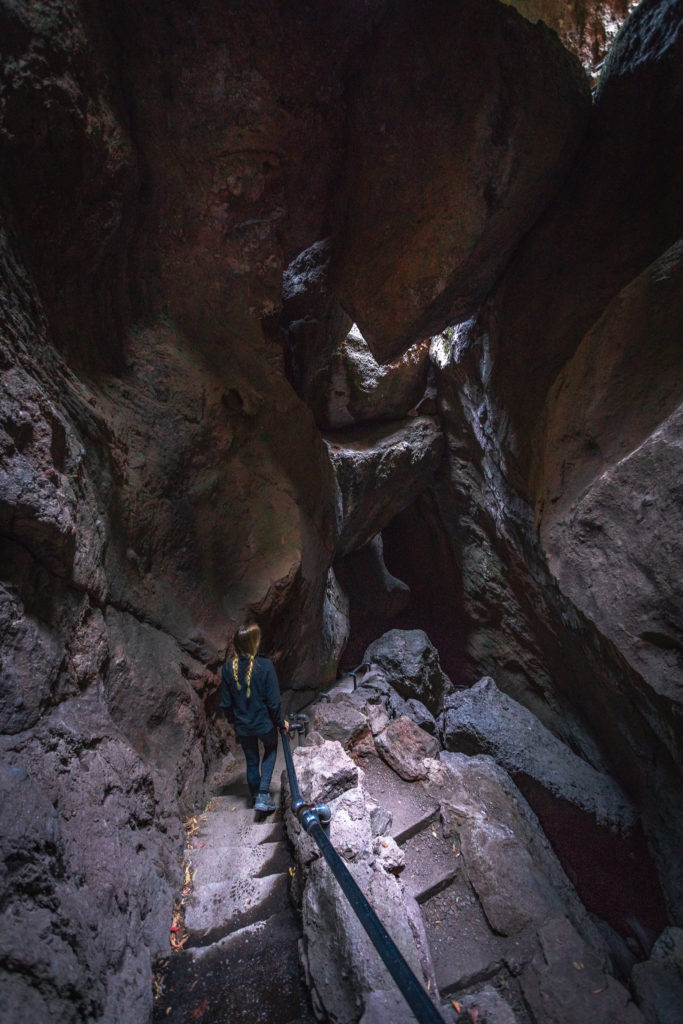
The Importance of the Caves in Pinnacles National Park
The caves in Pinnacles National Park are of utmost importance to many bat species. Out of 23 species in California, 14 types of bats call the talus caves in Pinnacles National Park home. Western Mastiff bats, mostly solitary males, house themselves in tiny cracks in the Balconies caves area. A large maternal colony of Townsend’s big-eared bats live year-round in the Bear Gulch Caves, a rarity for the species.
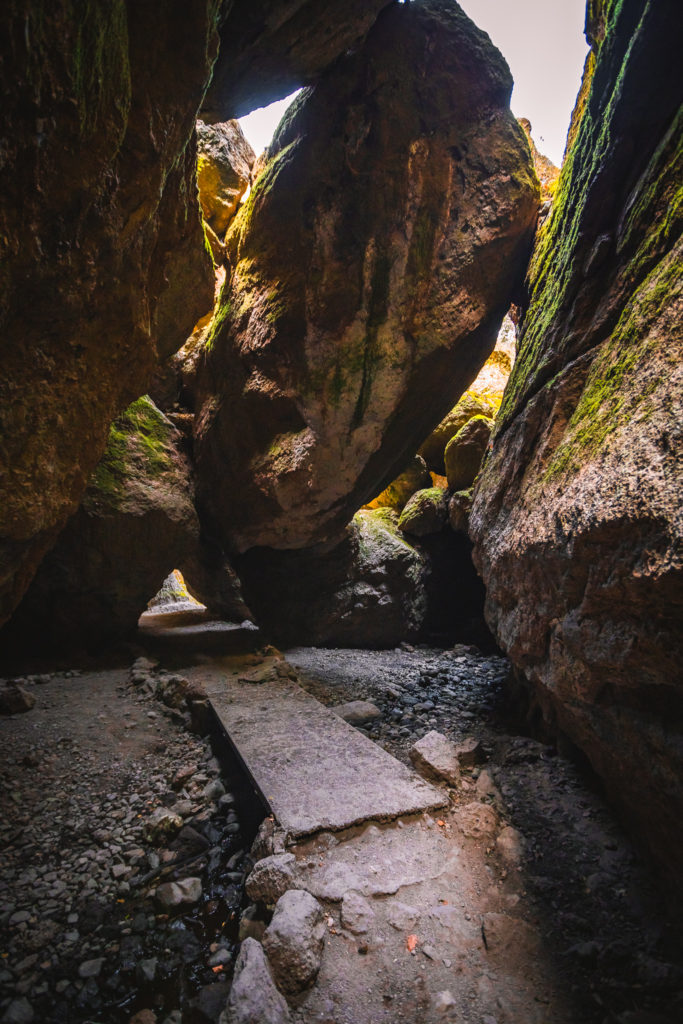
The seasons for when these bats breed and give birth vary. Normally, the majority of Bear Gulch is shut down in the spring and summer. Since the bats hibernate in the winter, the caves should be open if they’re not flooded.
For the current status of the cave openings and closures, be sure to check the website here.
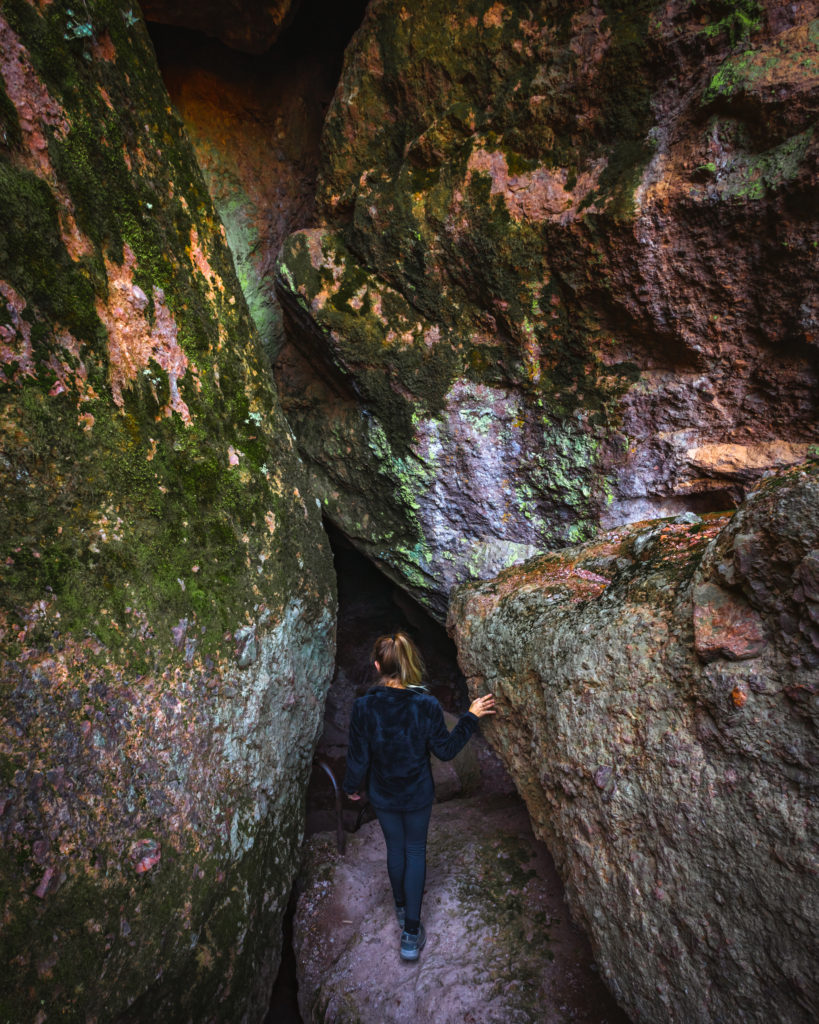
Hiking the Caves in Pinnacles National Park
There are two different areas of talus caves to explore in Pinnacles National Park. In the western area of the park you’ll find the Balconies Caves. The Bear Gulch caves are in the more-developed east side of Pinnacles. To do both in one trip, you’ll either have to leave the park and drive around to the other side or hike the distance inbetween.
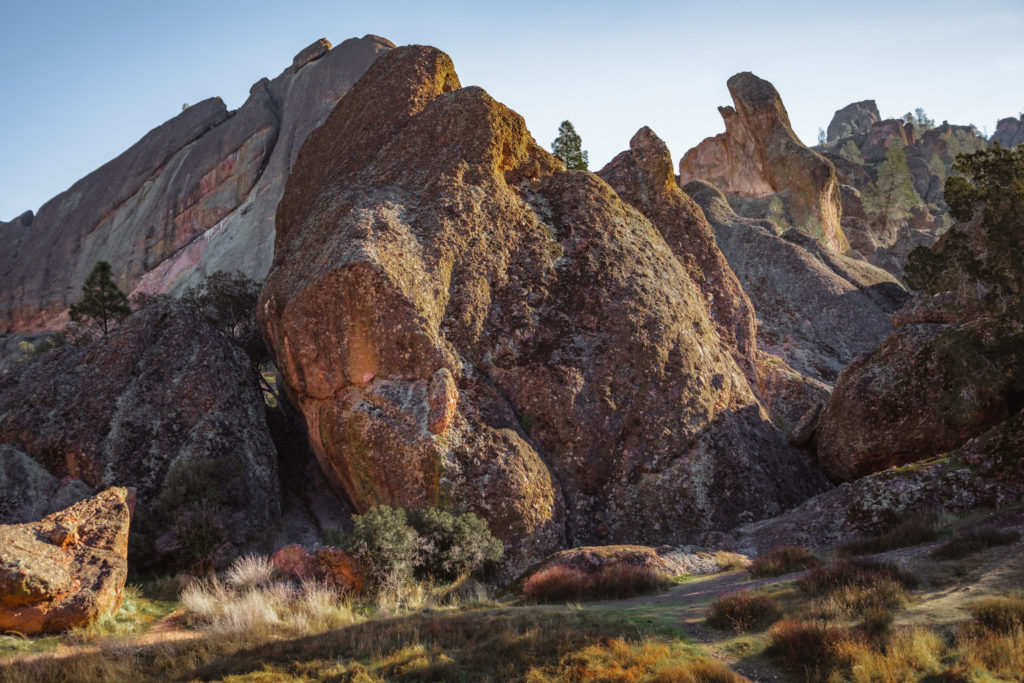
Bring along a few basic gear options for hiking the caves in Pinnacles National Park. Since the caves are subject to flooding, expect slippery surfaces and cooler temperatures. Once you’re within the caves, most sunlight is blocked out so bring along a headlamp and your basic hiking essentials.
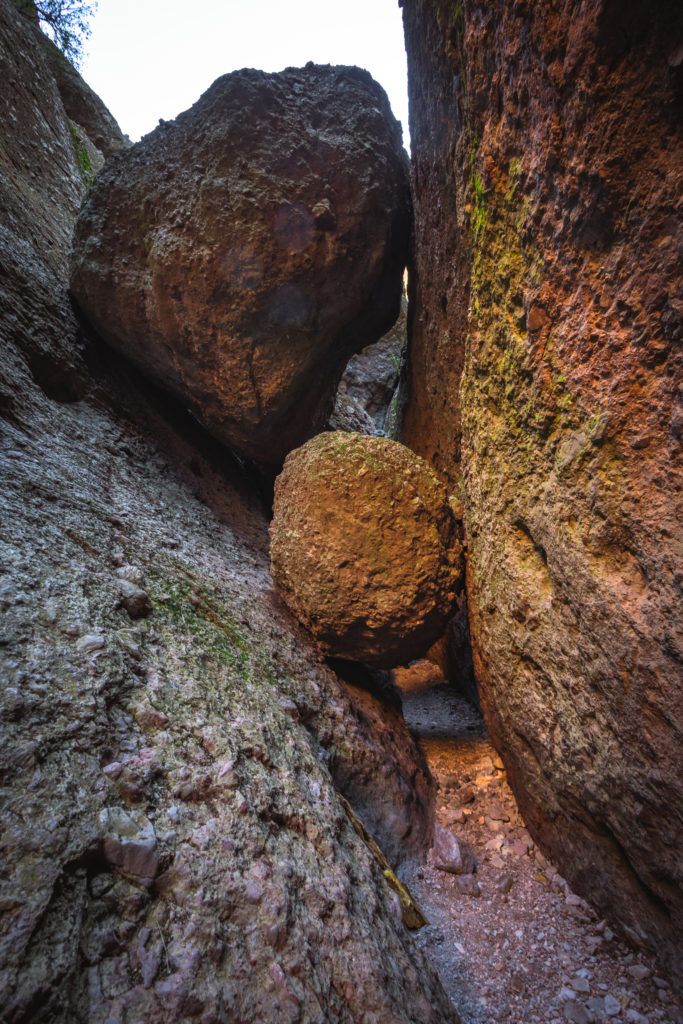
Balconies Caves
If beginning from the western parking area of Pinnacles National Park, the Balconies Caves can be seen via a 2.6 mile loop trail. Only want to see the caves themselves? Then you’re able to hike directly there via an out and back trail at just over a mile. I highly recommend the loop though!
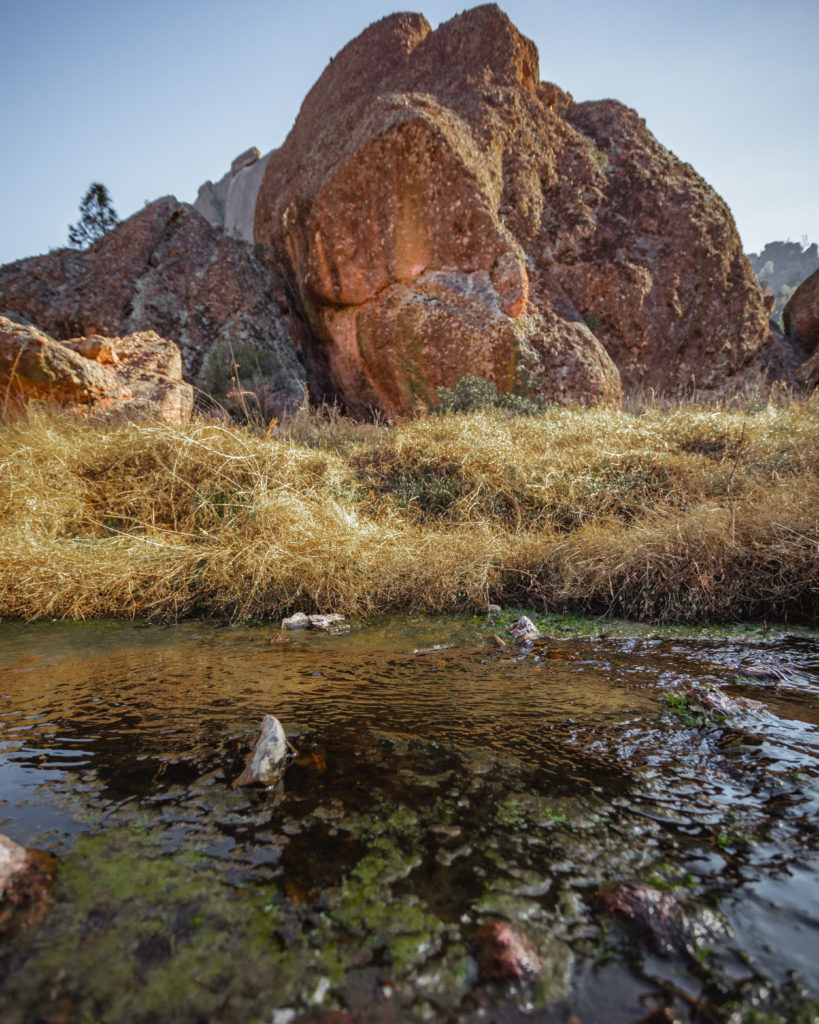
Walking through red chapparal and crossing over creeks, the spires of the Pinnacles peaks come into view almost immediately. When coming to the ‘Y’ in the trail in the wooded area, the caves are to the right. For the entire loop trail, I recommend taking the left first for some awesome views.
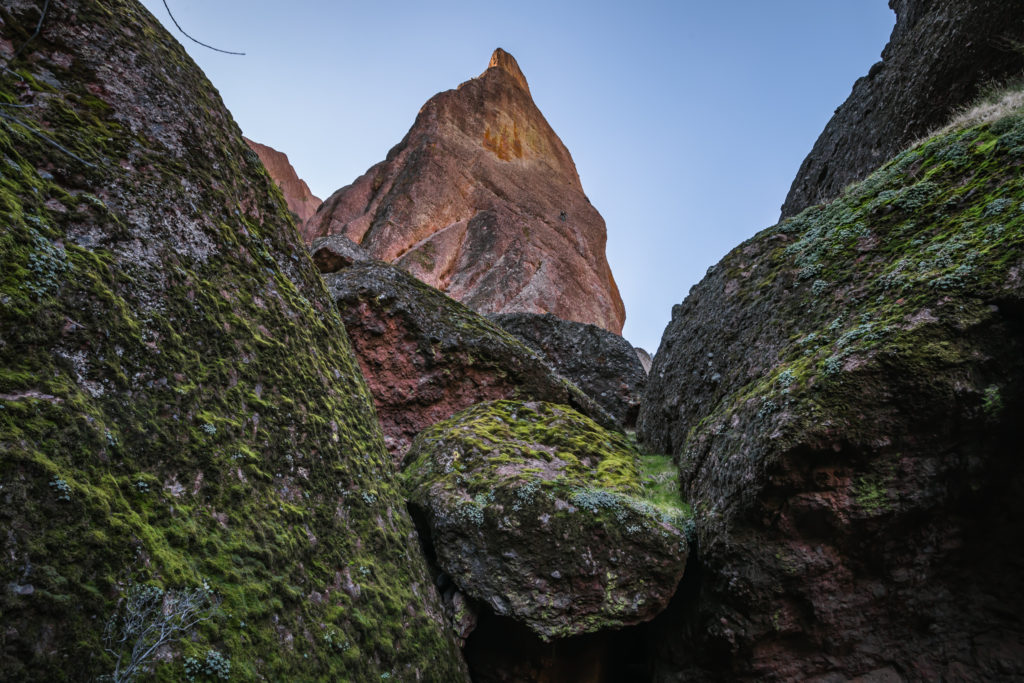
After taking that left, the trail begins to gain elevation quickly. The odd shapes in the distance catching the sun rays are a good distraction from the leg burn. If you’re lucky, you may catch some rock climbers scouring their way up the Pinnacles in the distance.
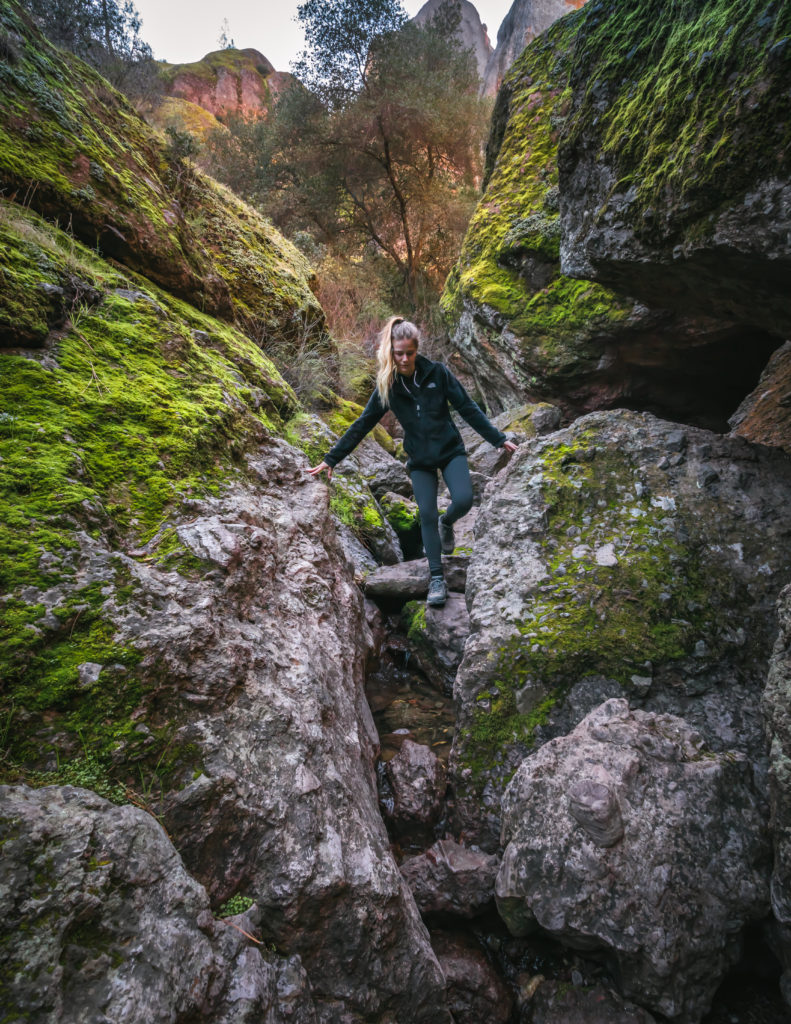
After about a mile we meet a creek rolling through tall mossy boulders. Keep climbing upwards to reach the entrance to the caves, evident by a metal door.
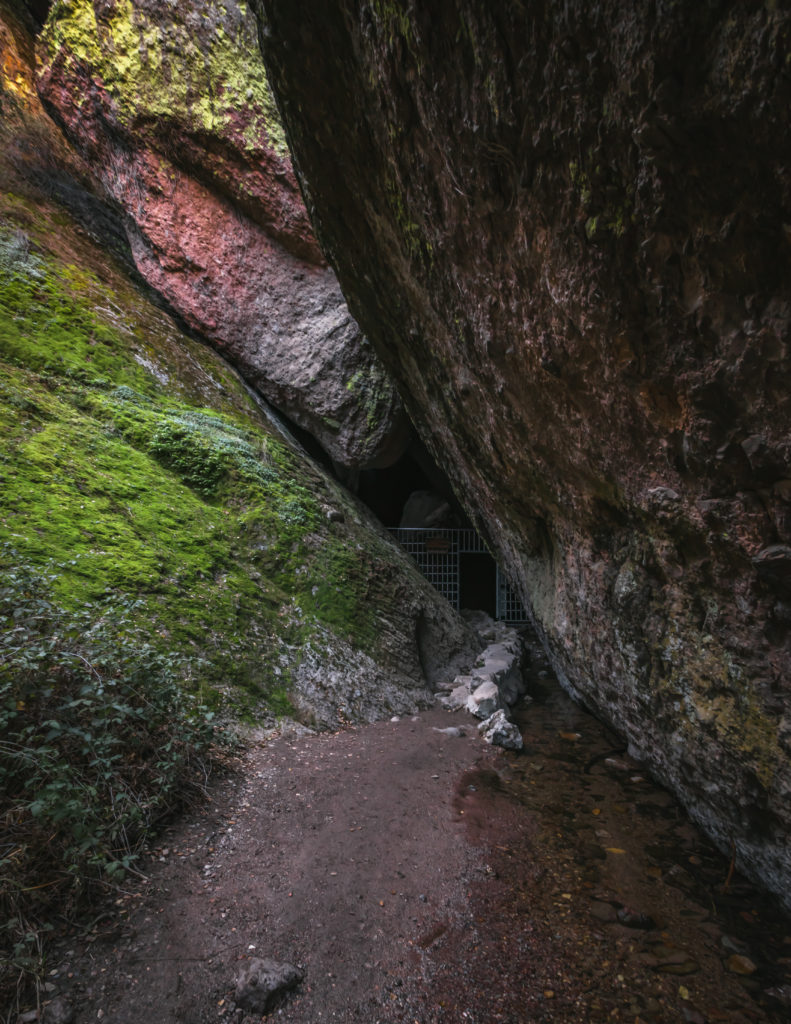
Hiking the Balconies caves could be considered moderate due to the tight spaces and slippery surfaces. By hiking the loop this way, we’ll have an easier route heading through the Balconies Caves by climbing upwards instead of down in the dark.
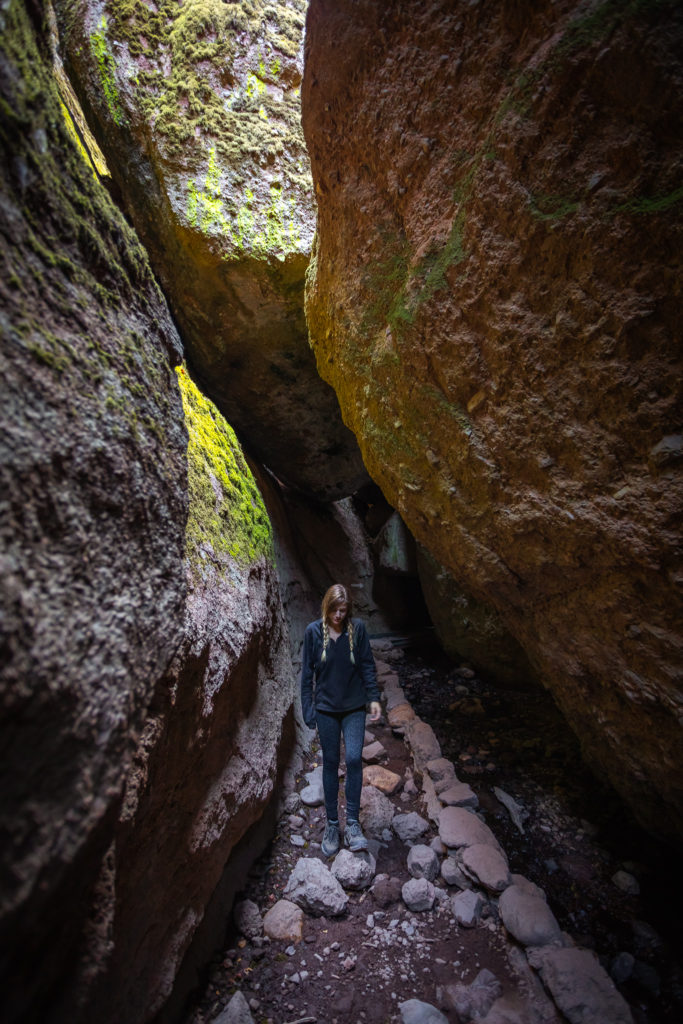
Bear Gulch Caves
You may or may not actually get the opportunity to hike the Bear Gulch Caves, depending on what time of year it is. The entire cave is closed from mid-May to mid-July while the bats are raising their babies. If the trail is open away from bats, there’s the chance it could be flooded so be sure to check the cave conditions here.
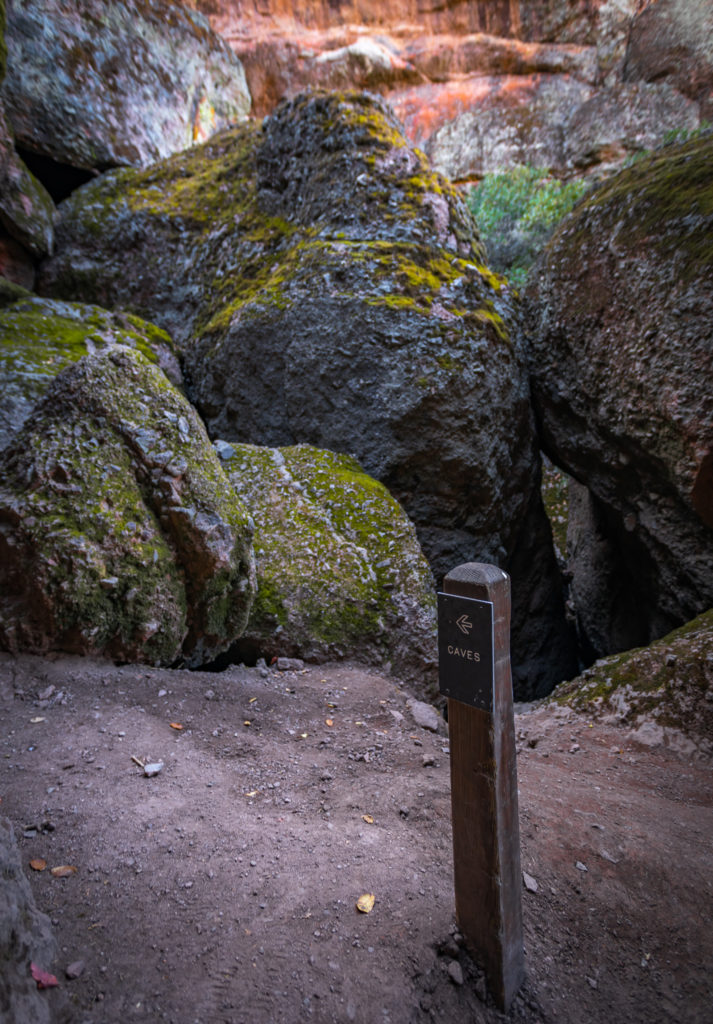
I hiked the Bear Gulch Caves at the end of my 9 mile loop hike around Pinnacles, which I’d highly recommend! For a shorter hike, you can begin from the parking area in Bear Gulch. Take the trailhead to the southeast for about a half mile until you reach the cave opening, evident by a small sign and a massive boulder with space underneath.
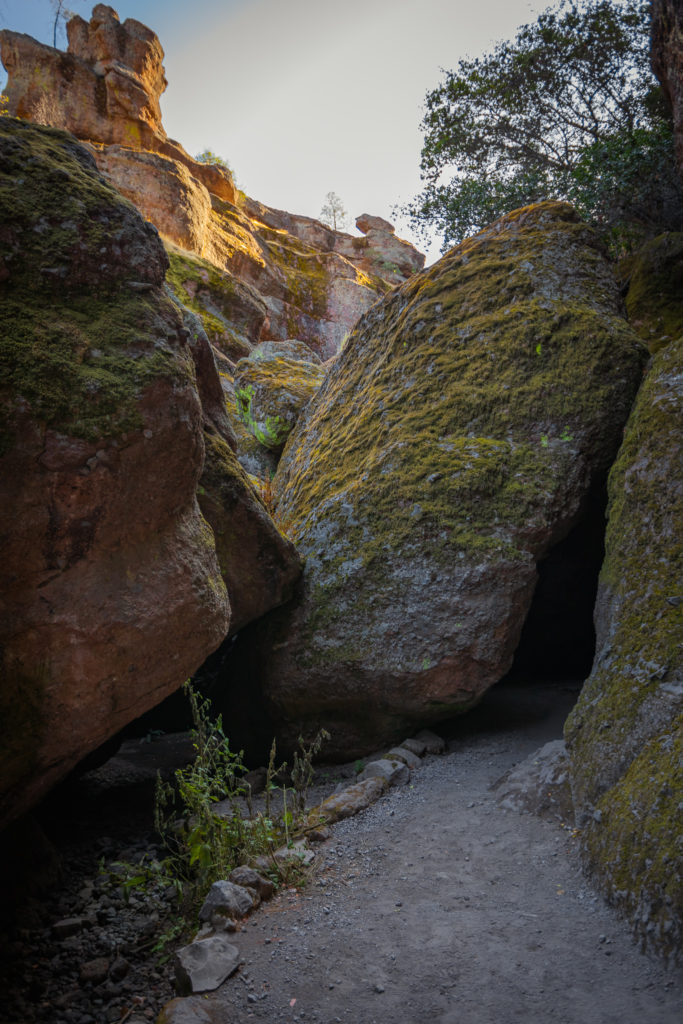
The light in the beginning of the Bear Gulch Cave allows you to see the boulders piled up all the way to the ceiling. Walking a little further in, you begin to climb the concrete steps while the sunlight disappears.
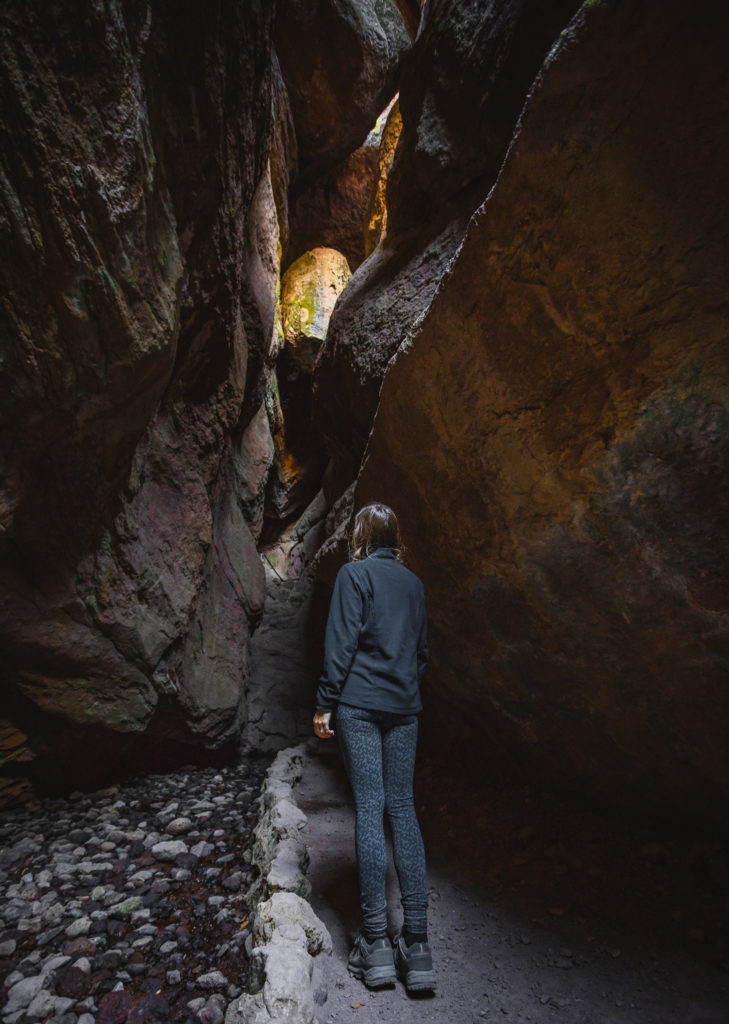
Not much longer and you’ll come to the carved steps leading upwards next to the stream where the reservoir empties out. At the top, we meet the Bear Gulch Reservoir where you can continue hiking along the Moses Spring Trail or turn back the way you came.
Read More: The Best Trail to See It All in Pinnacles National Park
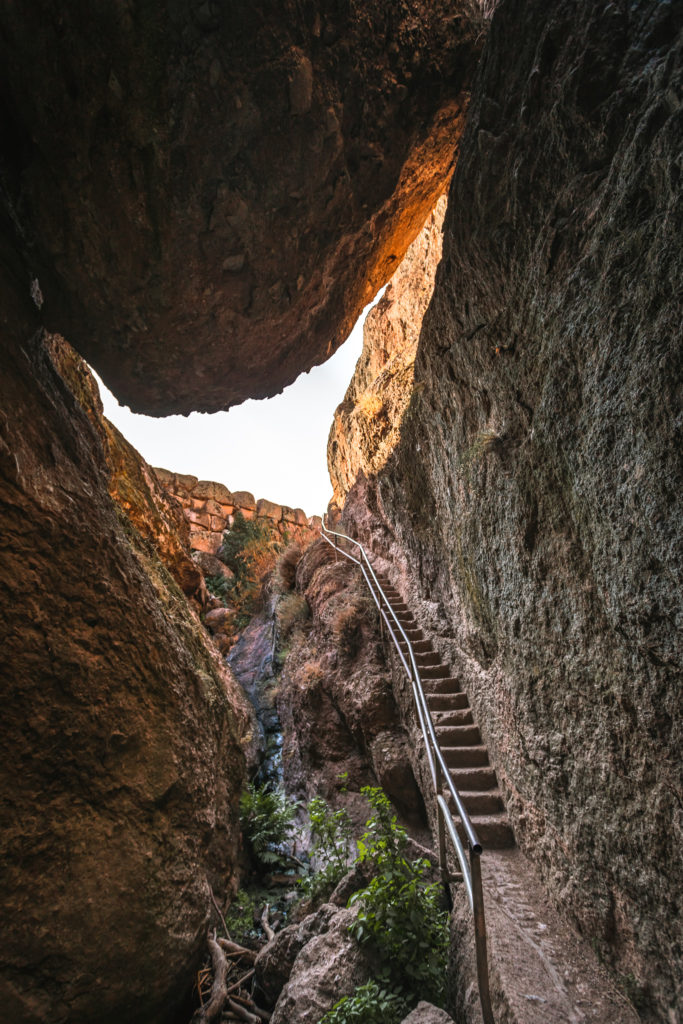
Read More National Park Posts HereBefore heading out on trails, it’s imperative that you’re familiar with the “Leave No Trace” principles. Read More: Leave No Trace: The 7 Rules of the Backcountry. Learn more about Leave No Trace on their website here.
Like This Post? Pin It!
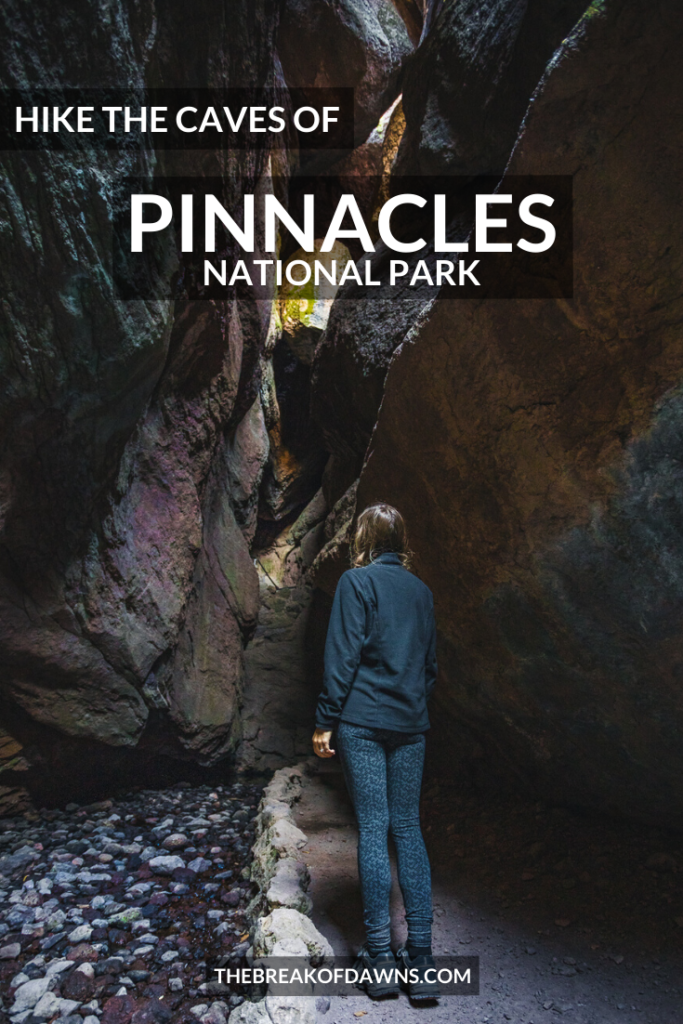
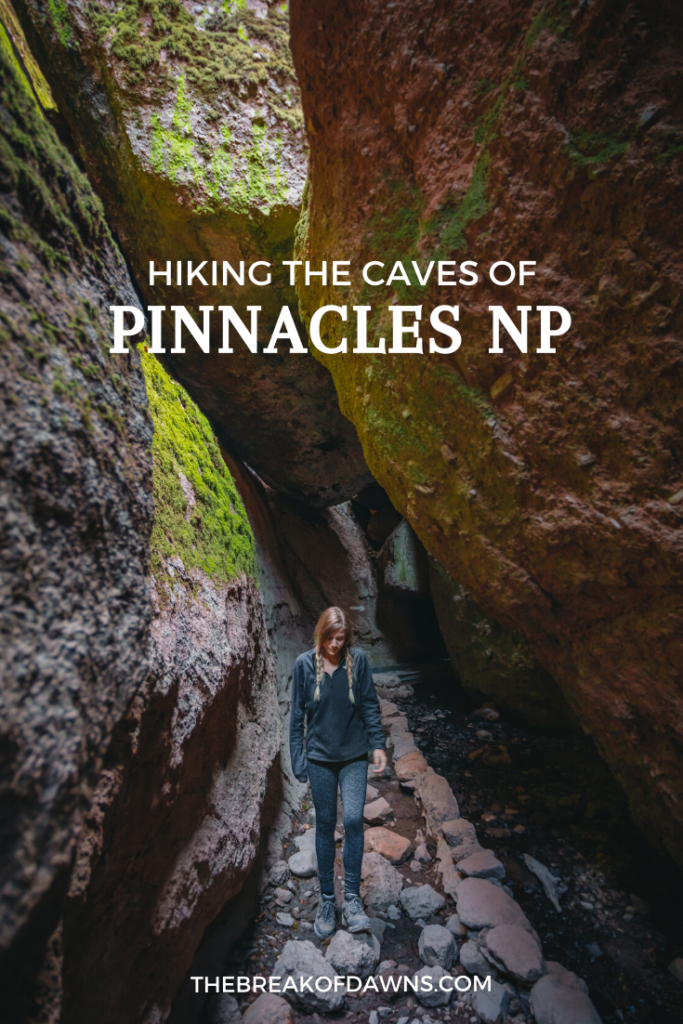
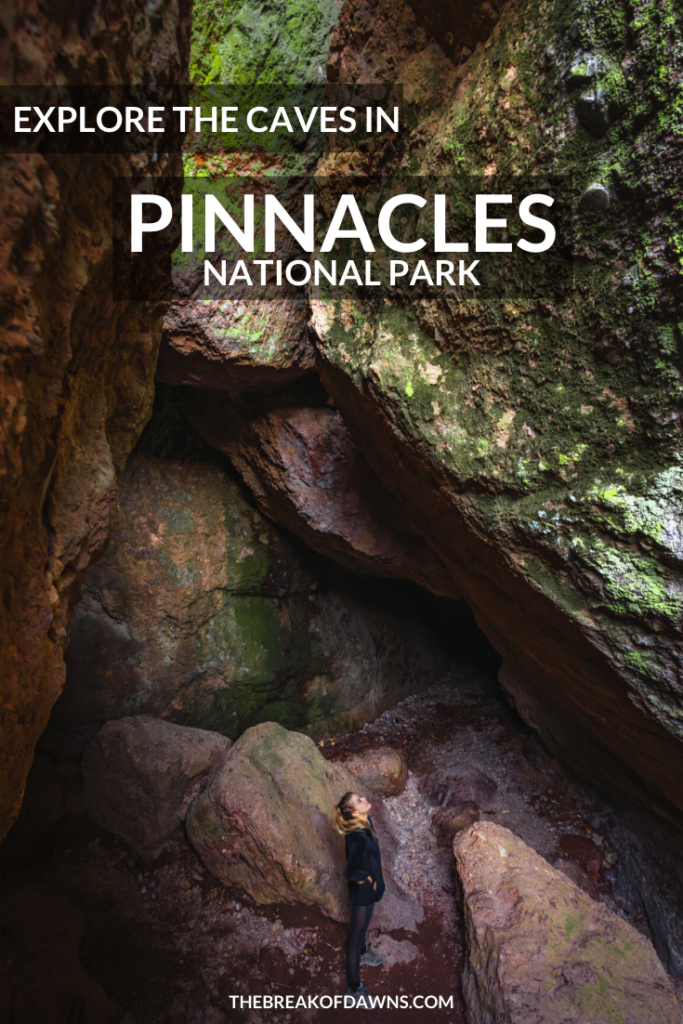
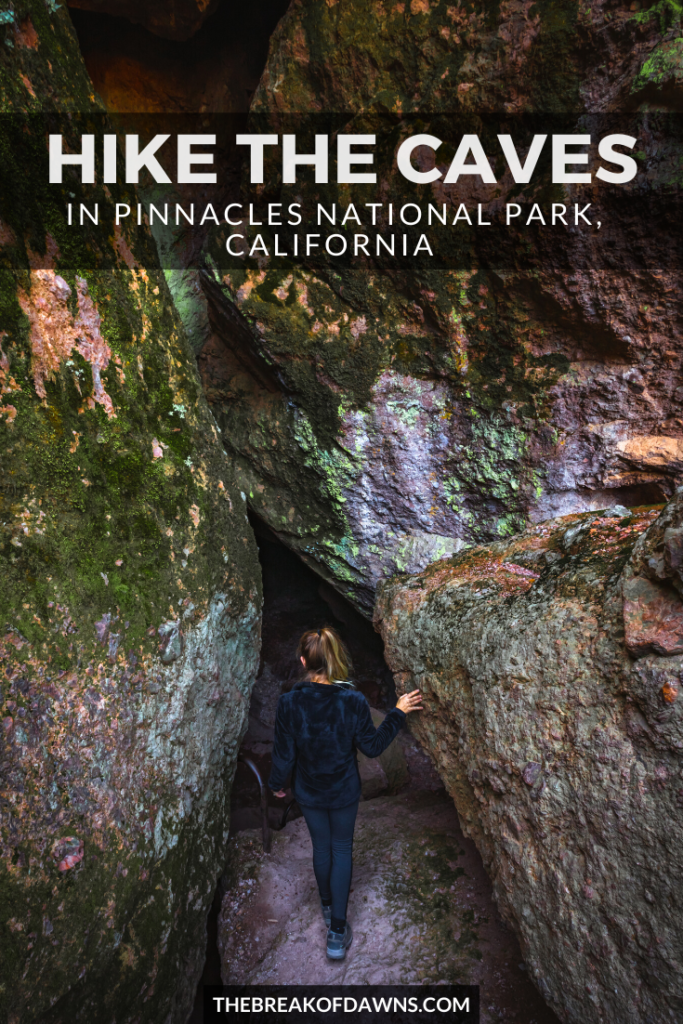


| This post contains affiliate links. At no extra cost to you, if you purchase one of these products I may receive a small commission. This helps me maintain my blog as a free space to you. Check out my Disclaimer for more info.


